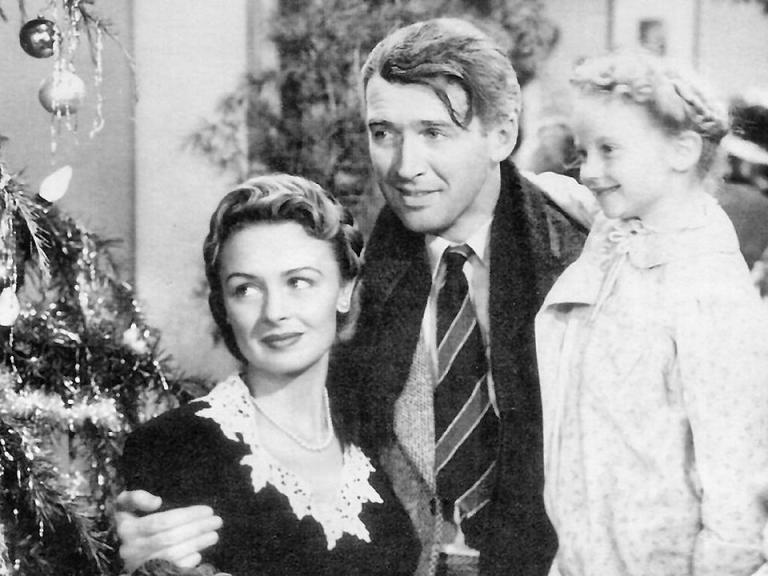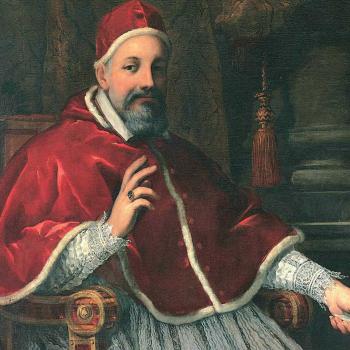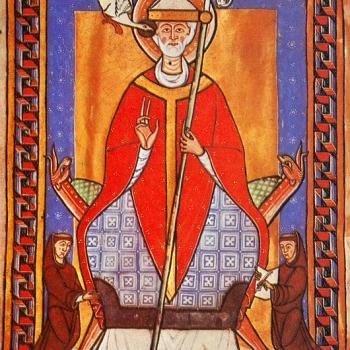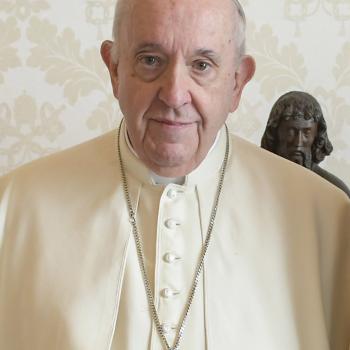For my last post before December 25th, I hope you’ll indulge me as I set aside the traditional themes of this blog to ask a pressing question:
Is It’s a Wonderful Life a Christmas movie?
I’ll assume you all know the plot well enough to know that It’s a Wonderful Life starts and ends on Christmas Eve, so it’s at least as much a Christmas movie as Die Hard. And it culminates with a joyful celebration centered on a Christmas tree.
But I mean something deeper: is it a Christmas movie in the sense that it has something to do with the Christian season that starts with the birth of Jesus Christ?
And now the easy answer becomes an instinctive No. For at first glance, it seems pretty clear that the faith animating It’s a Wonderful Life is not Christianity, but American civil religion.
I spent part of the weekend watching Netflix’s adaptation of Mark Harris’ book Five Came Back, about five American filmmakers who left Hollywood at the peak of their careers in order to participate in World War II. Of the five, Frank Capra was both the most active and the least directly touched by the war. Unlike John Ford (wounded at Midway, eyewitness to D-Day), George Stevens (who followed the U.S. Army all the way from Normandy to Dachau), William Wyler (who qualified to film bombing missions over Germany), and John Huston (who worked with the Signal Corps everywhere from the Aleutians to Italy), Capra saw nothing of the war beyond a bombing raid on London. Instead, he coordinated a massive Army filmmaking campaign, directing the famous Why We Fight series — which turned Axis propaganda against itself — and producing everything from cartoons for servicemen to a remarkable film about The Negro Soldier that was scripted by the African American writer Carlton Moss.
After being discharged, Capra joined forces with Stevens and Wyler to form Liberty Films, what he called “a directors’ company.” Its first production was Capra’s adaptation of Philip Van Doren Stern’s 1943 short story, The Greatest Gift. Retitled It’s a Wonderful Life, its tale of Jimmy Stewart’s George Bailey finally seeing the extent of his life’s impact was an enormous flop: reviled by most critics, and so unpopular at the box office that Liberty Films was bought out by Paramount. Capra earned yet another Oscar nomination, but his career never recovered.
Nevertheless, Capra insisted that It’s a Wonderful Life was “probably the strongest picture I’ve made… it epitomizes everything I tried to say in all the other films in one package.” Thanks to its second life on television, most critics and fellow filmmakers seem to agree. In Five Came Back, the primary Capra commentator, Guillermo del Toro, calls it Capra’s greatest work, a film of tremendous courage in which George Bailey’s story mirrored Capra’s struggle with finding self-worth, a struggle rooted in his experience as an Italian-American who felt “incredibly eager and incredibly pressured to prove himself. That spirit is still a spirit that he shares with millions of other immigrants from other countries in America.”
Who better than a native of Mexico who has spent most of his career making American films to understand that Capra’s vision of the United States was that of the immigrant? If, as del Toro says, “America is almost dreamlike for” the pre-war Capra, then that director’s first postwar picture reflected the hard-won realization of his vision for a land that could celebrate both individual freedom and mutual responsibility, equality and opportunity, tradition and reinvention.
Watching It’s a Wonderful Life remains, in that sense, a kind of ritual of American civil religion: a yearly reminder of a nation’s commitment to a set of values that spoke most evocatively to the longings of immigrants and were lived out most compellingly in Americans’ responses to the Great Depression and World War II.

But I think there’s something more going on with It’s a Wonderful Life. Del Toro insists early on in Five Came Back that Capra’s “true yearning… was existential, and not political… a need to be loved, a need to be saved.” Likewise, at the other end of the series, del Toro describes the arc of George Bailey as leading to a “truly existential” moment, when Capra has us look in “the darkest part of the mirror” at George’s sense of utter abandonment.
By itself, that doesn’t mean that there’s something religious, let alone Christian, about It’s a Wonderful Life. Writing in 2008, criminologist David Wilson called Capra’s film “the closest this atheist can get to heaven,” since it is ultimately “the least religious but most humanist film that you could ever see,” one that grounded “the ‘American dream’ in the reality of life, rather than in the comforts of religion and the hereafter.” After all, Wilson adds, George Bailey is not presented as religious apart from the dramatic catalyst of his one desperate prayer, and Wilson describes Capra as having “had a lifelong apathy towards his Catholic upbringing….”
That’s just not true; Capra returned to the Church later in life. But even if he wasn’t especially devout in the mid-1940s, the list of lapsed Catholic artists whose art was profoundly shaped by their religious upbringing is awfully long. (It includes Guillermo del Toro, for example.) And plenty of Christian and non-Christian students of film have noted the pervasiveness of Christian themes in a movie that Capra said was meant “to combat a modern trend toward atheism.”
It’s not just that the story of George Bailey is most basically about prayer being answered by a God who still sends heavenly messengers to Earth and can rewrite history for the sake of teaching a single individual. It’s a Wonderful Life reveals what Argentine critic María Elena de las Carreras-Kuntz called Capra’s “Catholic imagination.” (That from a 2002 article for the journal Film History that also discusses John Ford.) She reads Capra films as “modern day parables,” with It’s a Wonderful Life coming “the closest to the spirit of the Gospel, because it lays out a human conflict and explores its transcendental implications: how ought we to conduct our lives?” For Carreras-Kuntz, Capra’s Gospel-like parables “portray how love, a gift freely given, comes to ordinary reality and changes it extraordinarily,” despite his movies’ “absence of obvious religious imagery.”
(I’d argue that It’s a Wonderful Life is all the more effective in communicating such themes for its not being overtly religious. If you doubt that, try to endure the heavy-handed moralism of A Wonderful Life, a short film released a few years after Capra’s by the National Council of Churches. It’s narrated by a minister whom we meet at the wake for a Bailey-like character immediately established as having been “a God-fearing man” who “never missed a Sunday.”)
Only the most fundamentalistic sort of atheist could imagine that art can only be religious if it’s too heavenly minded to be any earthly good. Carreras-Kuntz, by contrast, recognizes It’s a Wonderful Life as “a work of theological optimism,” in which “the transcendent disrupts the course of human events… the divine is above the earth and comes to it to propose salvation to a soul in despair.”
That sounds like nothing so much as Christmas.
In fact, writing this post reminded me that, twelve months ago at my own blog, I called It’s a Wonderful Life “the best Christmas movie ever made.” (It’s certainly my favorite to watch this time of year.) But I could argue that it’d be even better understood as an Advent film.
After all, the miraculous Christmas Eve intervention that frames the story only pays off as dramatically as it does because the other two hours are dedicated to the theme of waiting. It’s the story of someone who spends year after year anticipating something like a miracle to rescue him from the gloom of his increasingly frustrating life. It’s a story of hope, the virtue that (in Eugene Peterson’s memorable paraphrase of 1 Cor 1) keeps taut the lines of purpose in our lives… even if they fray to a single thread that snaps in the words of a plea to God.
And it’s a story of love, says Carreras-Kuntz, creating “a spiritual community, a tangible manifestation of the Kingdom of God.” In his autobiography, Capra explained that It’s a Wonderful Life was meant to be good news for “the weary, the disheartened, and the disillusioned; the wino, the junkie, the prostitute; those behind prison walls and those behind Iron Curtains…”
Which sounds at least a little bit like the words we heard this past Sunday from the mother of Jesus, in response to an astonishing visit from an angel not named Clarence.
Now, even as the movie gives us a glimpse of the hungry being filled and the lowly being lifted up, it strikes me that Capra doesn’t exactly send “the rich away empty” or bring “down the powerful from their thrones.” Compare the actual climax of the movie with the “lost ending” depicted in a 1986 sketch on Saturday Night Live. In SNL’s version, Dana Carvey’s George and his family and friends leave behind their Christmas merriment to savagely beat the villainous Mr. Potter. Whereas the last we see of Potter in Capra’s version, the banker is still wealthy, powerful, and plotting evil against George Bailey… who loves his enemy enough to wish him Merry Christmas.
As far as we know, nothing happens to Mr. Potter. But if it does, it happens not in Pottersville but Bedford Falls, where the kingdom is not yet, but it is now. And one day — maybe when we’re at the point of doubting that Jesus’s first coming made any real difference, when we only have enough hope left to pray words of desperation — Jesus will come again to complete that work.












